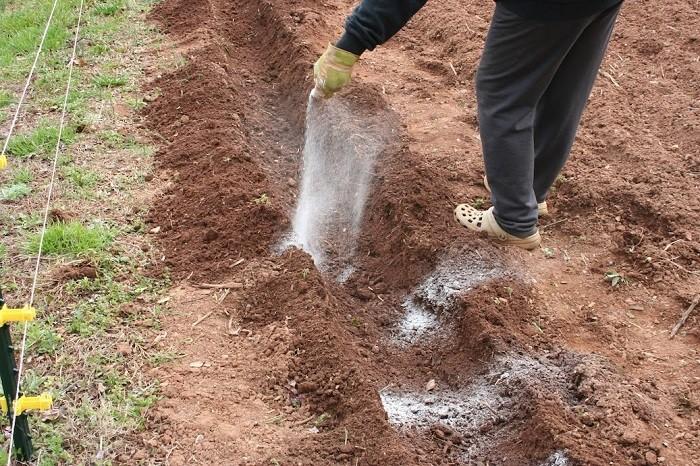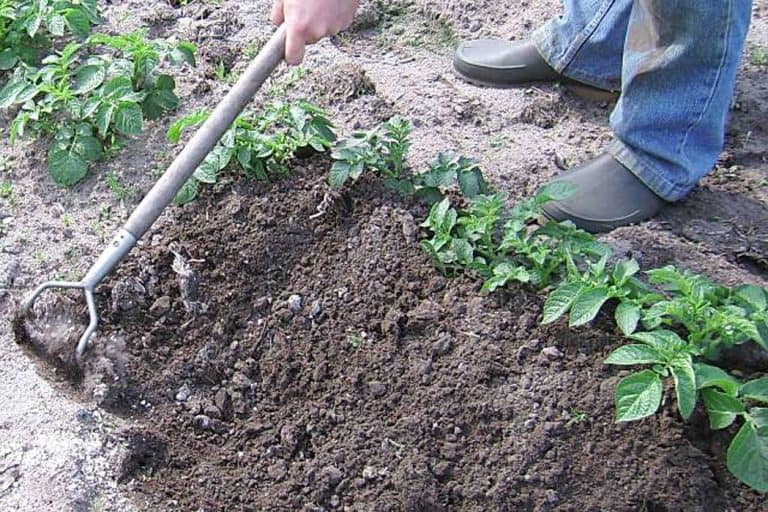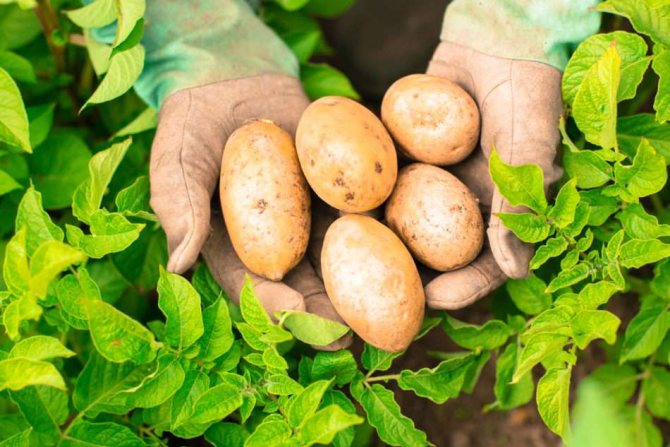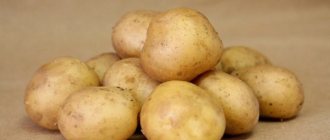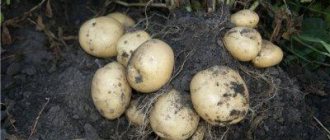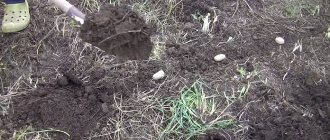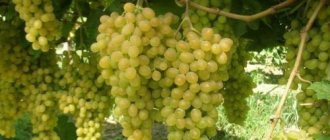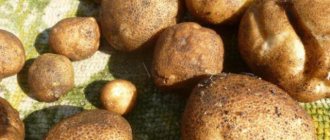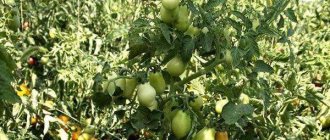Breeding history and distribution
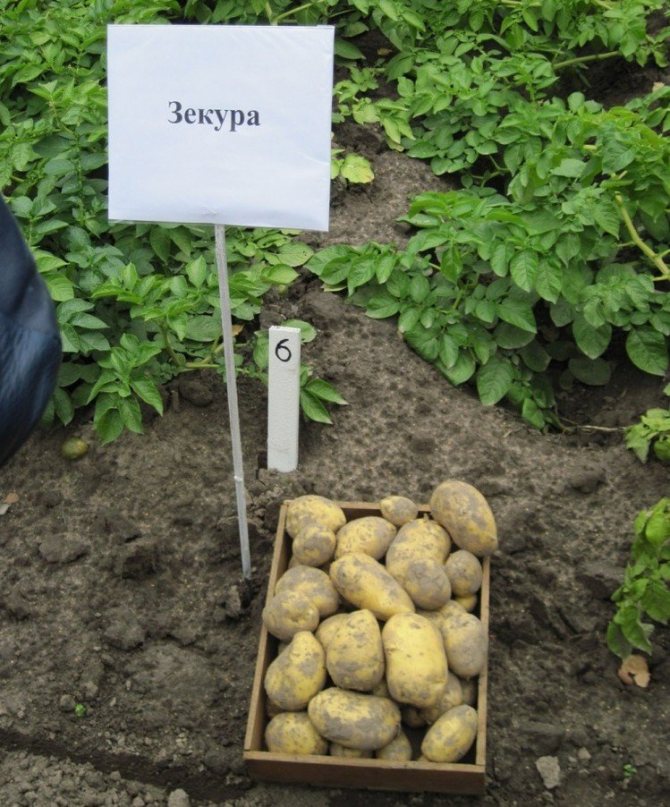
The Zekura variety was developed in Germany in the early 90s of the last century.
The German breeders who worked on the creation of this variety wanted to get an early maturing and disease resistant potato with high yields and excellent taste.
Initially, it was assumed that Zekura potatoes would be grown only in Central Europe, but the plant adapts well to unfavorable climatic conditions and is grown even in Siberia and Kazakhstan.
Gardeners reviews
- To get quality planting material buy it only from special enterprises. This is the only way to ensure that you have a Zekur that is properly prepared.
- Gardeners note that this option is unpretentious to care for.... But at the same time, the yield is good.
- Zekura matures earlier than most other combs.... The tubers are even and smooth, there are many of them under the bush. The taste is excellent and far surpasses most of the other options.
Description and characteristics of the variety
Zekura potatoes belong to table varieties and have gained great popularity among gardeners due to their high yield, unpretentiousness to environmental conditions and excellent fruit taste.
Did you know? 100 g of potatoes contain only 90-100 kcal, and the tubers themselves are 80% water.
Consider the characteristics of this variety:
- Bushes of the Zekura variety have a height of up to 35 cm, erect and compact, do not take up much space in the garden.
- The leaves of the bush are small, light green in color.
- The bush blooms in late June or early July with small red-purple flowers, which are collected in small corollas.
- Tubers are located underground compactly, located at a shallow depth.
- The fruits are slightly elongated and covered with a smooth yellow rind with small eyes.
- The flesh of the potato is yellow. It has excellent taste and contains about 15-18% starch.
- The variety is medium early, the harvest ripens within 90-100 days.
- Up to 20 tubers can be harvested from one bush, their weight is 60–150 g. The yield can reach 550 c / ha.
- The Zekura variety is resistant to many diseases, under the right storage conditions, the tubers remain tasty and retain an attractive appearance for 6 months.
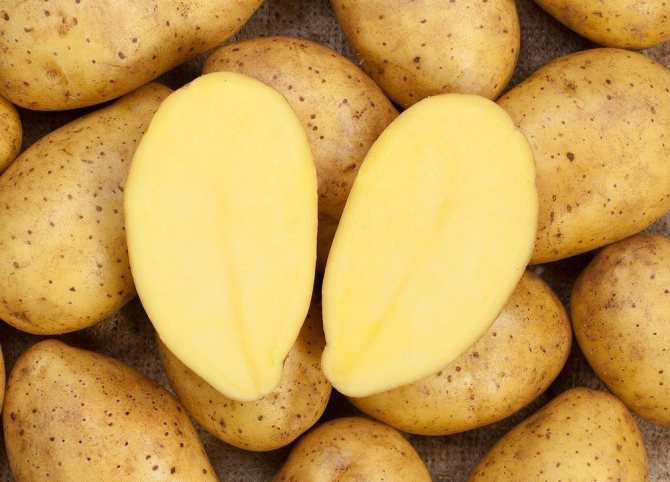

Pros and cons
The size of the Zekur potato crop, as well as the timing of its ripening, largely depend on environmental conditions. But, despite the growing conditions, this variety pleases with a large number of positive qualities.
- The advantages of Zekur potatoes include:
- high productivity;
- early maturation of tubers;
- unpretentiousness to climate conditions;
- disease resistance;
- ease of growing;
- preservation of varietal qualities for several years;
- almost complete absence of green and rotten tubers in the nest;
- excellent taste and appearance of the fruit;
- good keeping quality, long-term preservation of the presentation;
- Due to the medium boiling point, the tubers are good for mashed potatoes, vegetable stews, soups and frying.
Important! In order for all the advantages of the variety to manifest themselves with maximum force, it is necessary to timely remove the weeds around the potatoes and enrich the soil with nutrients.
During the entire existence of this variety, only one of its drawbacks was noticed. The downside of Zekura is that in cold or arid climates, tubers can be slightly smaller - about 70 g. Other negative qualities have not yet been found in this variety.
Official data
The originators of the variety are recognized: FGBNU "All-Russian Research Institute of Potato Farming named after A.G. Lorkha ", FSBSI" Samara Research Institute of Agriculture ", LLC" Agro, CJSC "Oktyabrskoye" Leningrad region, LLC "Elite potato" Tatarstan, breeding, Leningrad region, LLC "Biolab" Samara region.
All these organizations have been working on the research of the variety for several years, as a result of which in 1997 it was entered in the state register under number 9462317. Potatoes are recommended for cultivation in the Volgo-Vyatka, Central Black Earth, North Caucasian, Middle Volga, Siberian and Far Eastern regions as a mid-early dining destination.
Planting and growing potato varieties
Due to its many advantages, the Zekura variety is often chosen for cultivation not only in small private households, but also on an industrial scale.
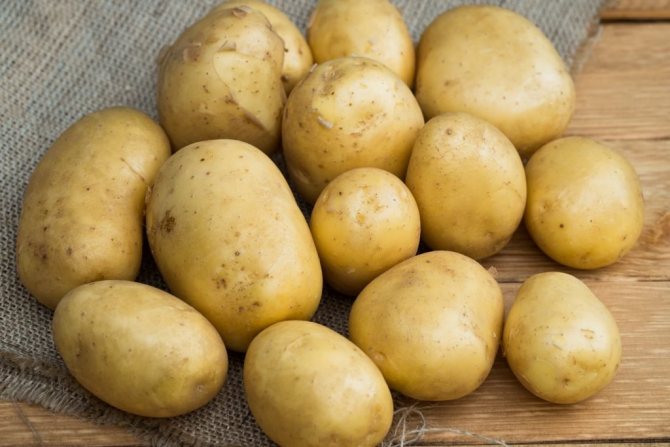

Potatoes do not require complicated care, they are comparatively not picky about temperature and watering, so growing them is simple and profitable. It is enough to comply with the planting dates and some simple recommendations for plant care. Let's consider them in more detail.
Optimal terms and conditions
It is recommended to plant Zekur potatoes on the site in the second half of May to exclude the possibility of night frosts. The soil at a depth of 15 cm should be warmed up to at least + 8 ° C and moderately moist. This will accelerate the germination of the planting material and keep it from decay.
Did you know? In 1995, the first experiment of growing potatoes in space was carried out aboard the American space shuttle Columbia, which ended in success.
Crop rotation rules
It is best to plant this variety in that part of the garden where perennial herbaceous plants, lupines, cereals and legumes, flax or mustard grew before. A good harvest from large tubers can also be obtained by planting the plant in areas where zucchini, garlic, cucumbers, cabbage or beets grew last year.
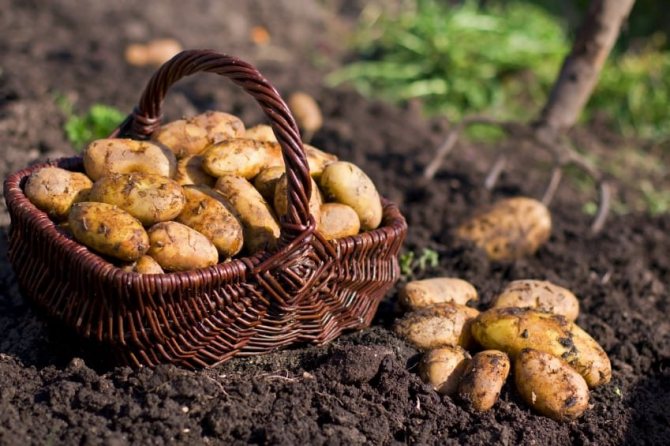

It is not recommended to plant Zekura potatoes on the same plot for two years in a row - this will lead to a decrease in the yield of the plant and a decrease in the size of the tubers.
Ground requirements
The Zekura variety has no special requirements for soil density or composition. These potatoes can be grown in soil with varying moisture levels. But before planting the tubers, you need to prepare the land on the site. This procedure not only helps to make the soil looser, but also adversely affects the roots of weeds and the larvae of possible pests.
Also learn how to grow potatoes from seed at home.
Recommendations for preparing a vegetable garden for planting Zekur potatoes are described below:
- in the fall, the land in the garden needs to be dug to a depth of about 30 cm;
- apply organic fertilizers to enrich the soil with nutrients. Manure, peat, humus, sawdust or wood ash are used as top dressing;
- in the spring, the site needs to be plowed again and the soil on it must be loosened before planting.
To get a good harvest, potatoes can be applied in the fall for every 1 sq. m of soil, 100 g of ash and 3 kg of humus.
Preparation of planting material
Zekura potatoes are characterized by good germination, and with timely planting, there will be no problems with the appearance of sprouts.
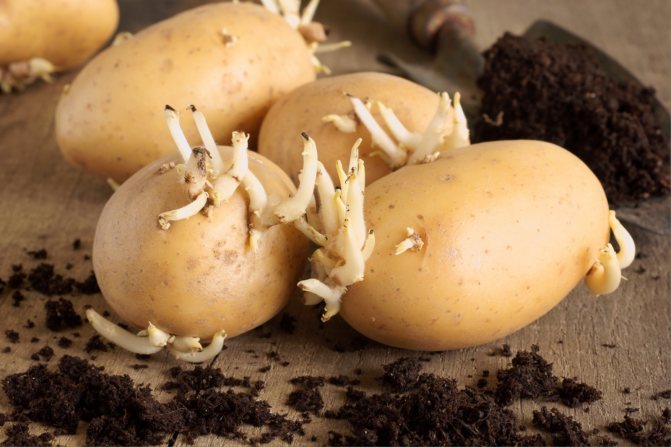

General recommendations for preparing potato tubers for planting are as follows:
- medium-sized tubers that were selected for planting in the fall after harvest should be stored separately from the rest of the potatoes;
- during the winter, planting material must be periodically inspected and damaged fruits removed;
- a couple of weeks before the planned planting, the tubers can be decomposed in one layer in a bright and warm room, so that the sprouting process takes place more actively.
Important! The Zekura variety does not require specific preparation and processing of planting material.
Landing technology
Zekura potatoes have a simple planting technology that even a novice gardener can handle. In order for the planting material to quickly sprout, it is enough to follow some standard recommendations for planting it.
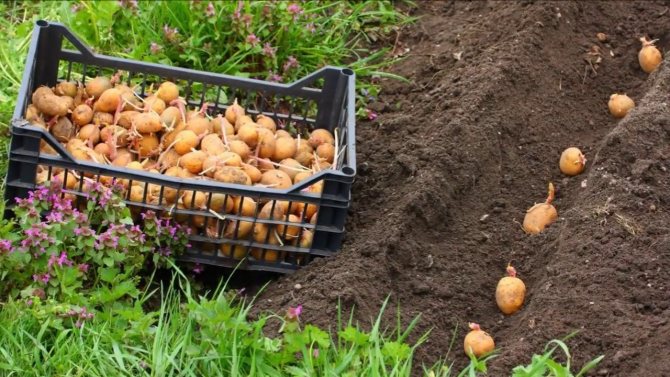

Step-by-step instructions for landing the Zekura are described below:
- Dig small holes 10 cm deep in the soil, placing them in straight rows on the site.
- The distance between the holes should be about 50 cm, between the rows - 35 cm.
- Place a little wood ash or humus in each hole for active germination of tubers.
- Lower the planting material into the hole so that the sprouts stick up. Sprinkle the holes with earth.
It is recommended to periodically update the planting material of this variety so that the potatoes do not lose their positive varietal qualities over time.
Yield


During the applied organic fertilizers, ready for the reproduction of soil microflora and the transformation of mineral elements into biologically available ones, they affect not only the quality, but also the quantity of the obtained crop.
The commodity stock of potatoes is kept at the level of 200 - 325 c / ha, which is 20 - 45 c / ha higher than the standard "Nevsky". A wide range can also be traced here, which indicates the responsiveness and plasticity of the variety.
The maximum yield was obtained in the Oryol region within 370 c / ha, which is 160 c / ha higher than the zoned variety "Post 86".
The originators of the variety claim that the variety has a stable yield. However, potato gardeners completely disagree with this. Potatoes don't always show their genetic potential. Heat, cold, torrential rains, all natural disasters negatively affect the yield of the variety. That is why some potato growers refuse to cultivate varieties in favor of others, new and highly productive.
Features of caring for potatoes after planting
The Zekura potato variety is unpretentious in cultivation techniques and does not require a lot of time from the gardener. To achieve the maximum yield of large and beautiful tubers, it is enough to provide the potatoes with standard care, which consists of weeding, cultivation of the soil around the plant and proper watering.
Did you know? The first place in the world for the production of potatoes is China. About 80 million tons of the product is grown there annually.
The basic rules for caring for the Zekura variety are described below:
- watering - carried out with significant drying of the soil to a great depth. The first watering is recommended after the appearance of small green shoots 5–10 cm high. The best result is given by drip irrigation of bushes;
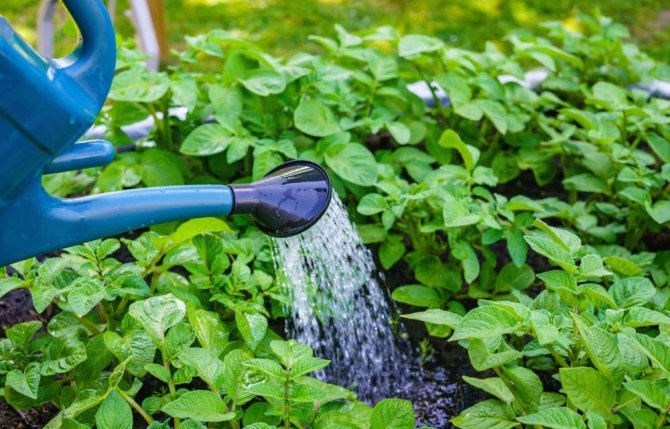

- weeding - carried out in June, before the flowering of the plant. In the future, weeds are removed as necessary so that they do not cover the potato bushes from the light and do not draw out all the nutrients from the soil;


- loosening the soil - carried out periodically as needed, especially after rain or watering. This procedure removes the hard crust formed on the ground, facilitates the access of air and moisture to the tubers, and stimulates their growth;
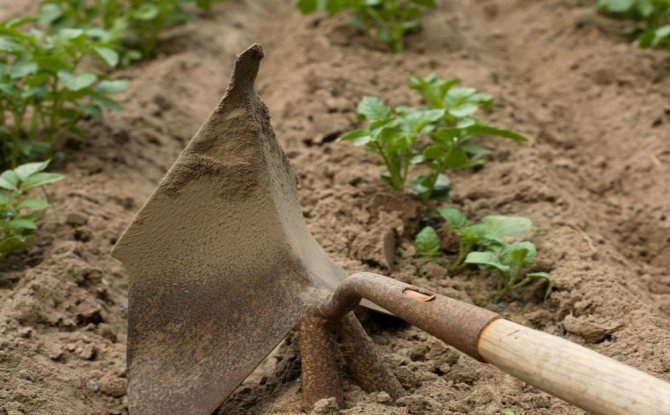

- mulching the soil around the plants - helps prevent weeds, keeps the soil moist and loose for longer. Rotted sawdust or humus is used as mulch;
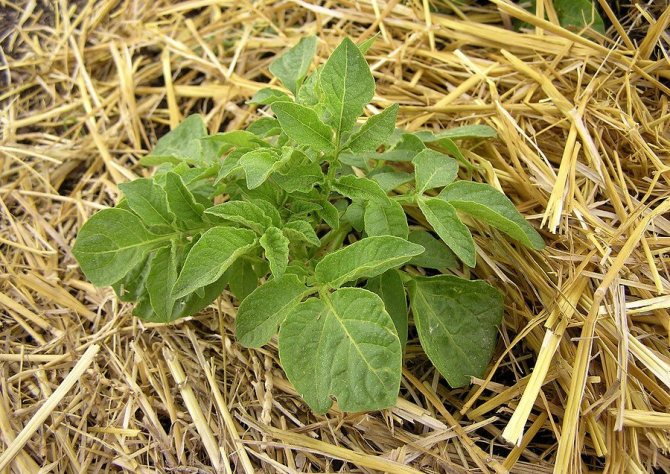

- hilling bushes - carried out in the first half of July in order to form a compact nest of tubers. Thanks to hilling, the soil around the bush stays moist longer.
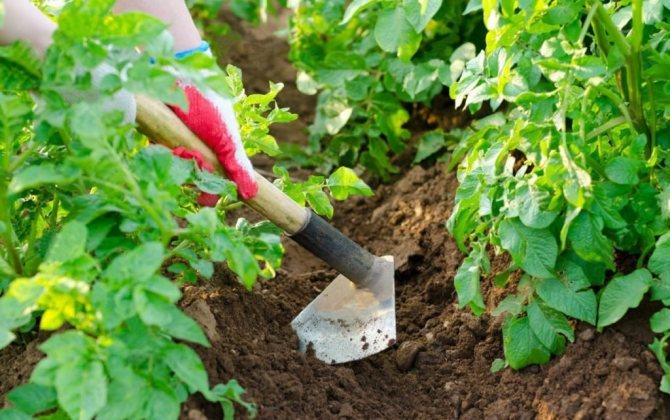

Pests and diseases
With proper care, Zekura potatoes are highly resistant to many diseases. The plant is not afraid of late blight, cancer, rot and common scab, but the bush is not immune from the attack of pests, so it is important to identify them in time and take the necessary actions to eliminate insects.
Read what to do if potatoes have large tops.
The list of possible pests of Zekur potatoes is presented below:
- Colorado beetle. Insects lay eggs on the tops of potatoes, from which the larvae hatch, eating the leaves of the plant, so the bushes need to be periodically inspected, and it is recommended to sprinkle the ground between them with wood ash. In the fight against the pest, the neighborhood of potatoes with legumes planted along the perimeter of the site helps well.
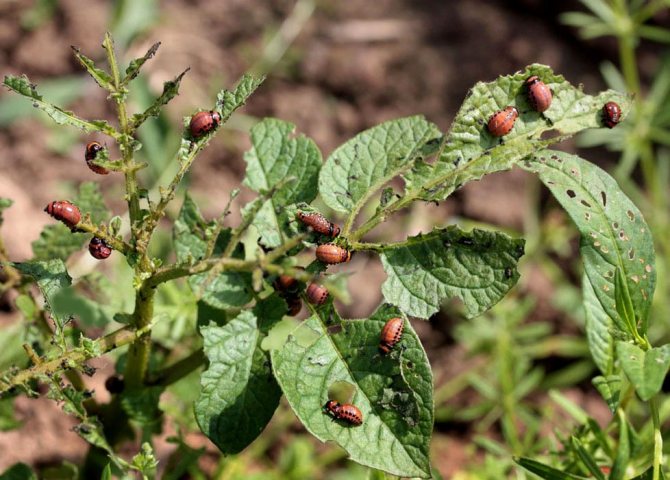

You can plant calendula between the rows of bushes - its smell will scare away insects. If the Colorado potato beetle appeared in large quantities, then to save the harvest, the bushes are treated with chemical preparations against insects (for example, "Corado", "Bitobaxicillin"). - Wireworm. This pest lives in the soil and feeds on potato tubers. Its appearance can be signaled by wilting of the ground green part of the bush.
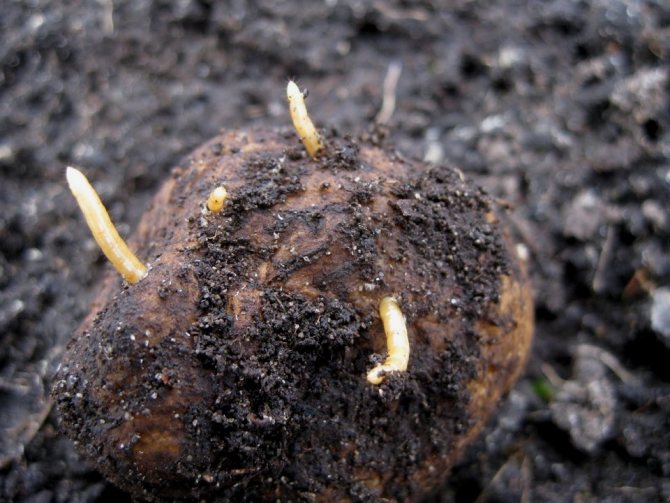

To prevent the appearance of a wireworm, legumes, mustard, buckwheat or clover are planted around the site. When larvae appear on the site, sprinkle the ground between the potato bushes with lime or wood ash. You can set pest traps made from ordinary cans, buried in the ground to the very neck. You can put any fresh vegetable inside the jar, the smell of which will attract the larvae. Every 2-3 days, the traps are inspected, pests are pulled out of them and destroyed. With a large number of larvae, chemical means of control are used (for example, "Prestige", "Aktara"). - Potato scoop. The butterflies themselves are not dangerous to the plant, but they lay eggs, from which voracious larvae emerge. They destroy the potato tops and can lead to the loss of some of the crop.
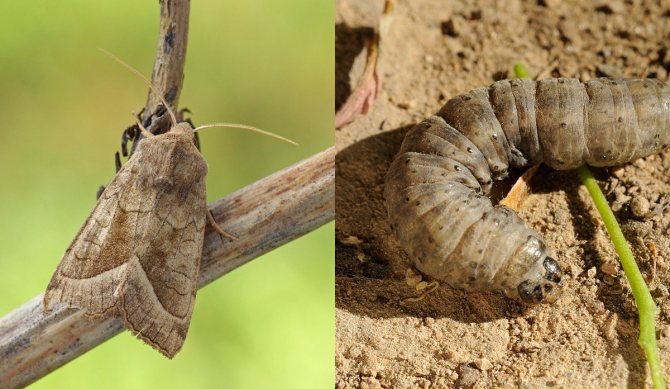

To prevent the appearance of scoops in the fall, you need to carefully dig up the ground in the garden and plant potatoes away from the tomatoes. If caterpillars appear on the bushes, then they are collected by hand. With a large number of pests, chemical insecticides are used. - Medvedka. This pest lives in the upper layers of the soil and can damage young potato sprouts or already ripe tubers by gnawing them from all sides.
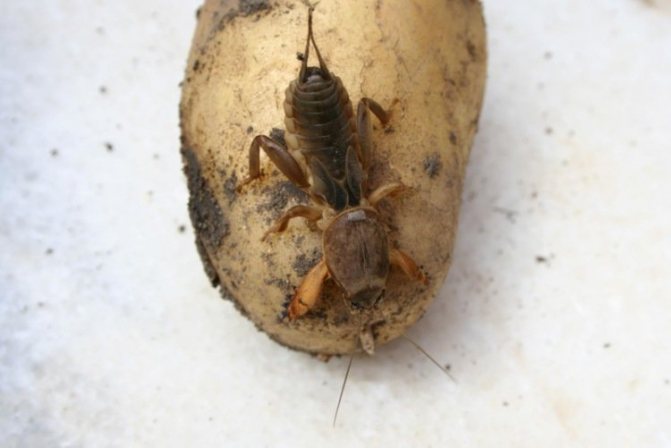

To prevent the appearance of a bear around the site, you can plant garlic or coriander, their pungent smell well scares off the pest. In order to prevent the bear from entering the site, ditches about 60 cm deep are dug around the perimeter and filled with rubble. If pest moves are noticed in the soil on the site, then they need to be poured with an aqueous solution of kerosene (10 ml of substance per 1 liter of water).
Important! To prevent the appearance of all the described types of pests on potatoes, it is necessary to remove all weeds, take them outside the garden and bury them deeply in the ground.
Harvesting and storage of crops
Zekura potatoes are harvested from the second half of August to mid-September. In winter, it is most convenient to store tubers in a basement or cellar at a temperature of + 2 ° C and an air humidity of at least 75%.
The fruits are put in bags, wooden boxes with ventilation holes or in nets. In such conditions, they can be well stored for at least 6 months.
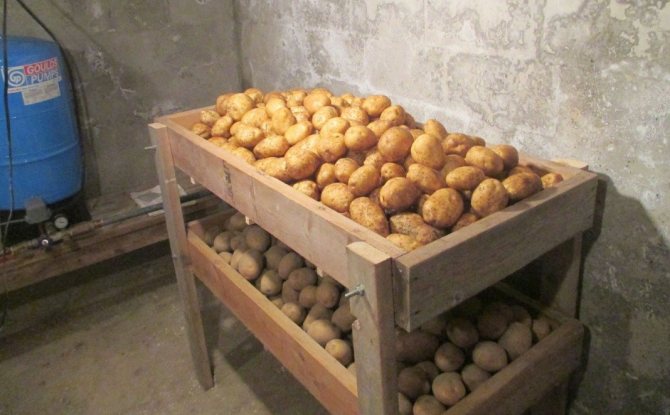

Before laying fruits for storage, it is imperative to carry out the following actions:
- clean the tubers from the soil and dry them;
- remove damaged and rotten fruits;
- sort the crop by size, selecting medium tubers for planting.
See also the technology for growing bagged potatoes.
The Zekura potato variety is very easy to grow and does not require careful maintenance or specific climatic conditions. The taste qualities of the tubers are at their best, and the yield of the plant will delight even the most demanding gardener. To do this, you just need to follow the simple rules for growing and caring for a plant described in the article.
Agrotechnics
Planting tubers (50-80 g each) are pre-germinated. The kidneys awaken at a temperature of + 3-6 ° C. This will allow seedlings to appear 6-10 days earlier.
Seed material is planted when the soil warms up to + 7-12 ° C. Tubers begin to germinate most quickly at + 16-19 ° C. But the higher temperature inhibits the development of the potato crop.
Planting depth depends on soil type and moisture:
- 8-10 cm on light soils;
- 6-8 cm on heavy soils;
- 12-14 cm in dry areas.
The most favorable conditions for the growth and formation of a large yield are created at a soil moisture level of 70-80%. Above these indicators, the tops will begin to die off quickly, and the potato tubers will stop growing.

